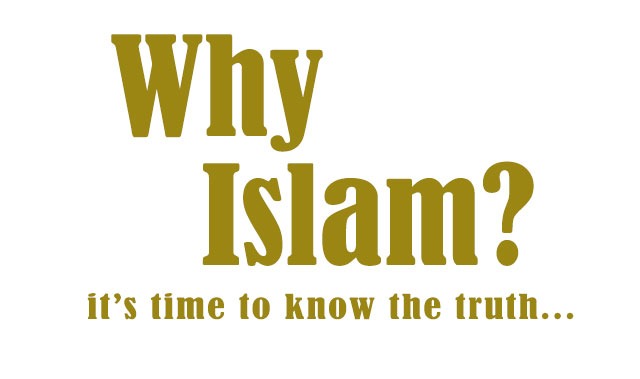Distorting the Image of Islam in the Media: Between Political Agendas and Narrative Battles

Introduction: When Messaging Becomes a Weapon
In a world driven by rapid information and complex interests, media has evolved from a mere transmitter of news into a powerful tool for shaping public opinion and directing collective consciousness. Among the most systematically misrepresented topics in global media is Islam and its followers. This distortion is often employed to serve political and ideological agendas that go far beyond journalistic coverage.
This article explores the phenomenon of media-driven distortion of Islam, tracing its historical roots, modern mechanisms, political motivations, and its impact on both Muslim and non-Muslim societies. The analysis is supported by open-access references and avoids religious texts to ensure respectful and accurate representation.
🧭 Historical Roots of Media Distortion
1.1 From Orientalism to Systematic Hostility
Since its emergence in the 7th century, Islam has faced intellectual and cultural resistance from dominant empires and religious institutions. As the Islamic state expanded, Western powers began to perceive Islam as a civilizational threat. This led to the rise of Orientalist discourse—an attempt to study Islam from an external lens, often tainted by bias and misrepresentation.
- Early Orientalists described Islam as rigid and backward.
- During the Crusades, religious rhetoric was used to justify violence against Muslims, embedding stereotypes that persist to this day.
1.2 Modern Media and the Reproduction of Stereotypes
With the rise of mass media in the 20th century, Islam’s image was reshaped through films, newspapers, and television. It was increasingly associated with violence, regression, and intolerance—especially in the context of Middle Eastern conflicts.
- Hollywood films such as True Lies and Rules of Engagement portrayed Muslims as terrorists.
- Western newspapers frequently used terms like “radical Islam” and “Islamic threat” without distinguishing between faith and individual actions.
🎯 Mechanisms of Media Distortion
2.1 Selective Coverage
Media outlets often highlight incidents involving Muslim individuals while downplaying or ignoring similar acts committed by non-Muslims. This selective framing creates a false impression that Islam is inherently violent.
- Example: The 2019 Christchurch mosque attack in New Zealand, committed by a non-Muslim extremist, received significantly less coverage than attacks involving Muslim perpetrators.
2.2 Cultural and Religious Generalization
Individual actions are frequently portrayed as representative of the entire religion. When a Muslim commits a crime, it is often linked to their faith, whereas similar acts by others are treated as isolated incidents.
2.3 Use of Stereotypes
- Muslim men are often depicted as aggressive, intolerant, and authoritarian.
- Muslim women are portrayed as oppressed, voiceless, and forced into religious dress.
These stereotypes are reinforced through visual media and written narratives, fueling fear and hostility toward Muslims.
🧠 Political Motivations Behind the Narrative
3.1 Justifying Foreign Policies
Anti-Islamic media rhetoric is frequently used to legitimize military interventions in Muslim-majority countries under the guise of “counterterrorism” or “democracy promotion.”
- The 2003 invasion of Iraq was framed around a narrative linking Islam to global threats.
- Similar media campaigns accompanied interventions in Afghanistan, Syria, and Libya.
3.2 Empowering Far-Right Movements
Far-right political parties in Europe and the United States exploit Islamophobic narratives to gain public support through fear-based messaging, deepening societal divisions.
- Germany’s AfD party used anti-Muslim rhetoric in its election campaigns.
- In France, debates around hijab and niqab were politicized to restrict religious freedoms.
3.3 Marginalizing Moderate Islamic Voices
Even moderate Islamic movements that advocate democracy and coexistence are portrayed as potential threats. This undermines their political participation and fuels internal polarization within Muslim communities.
🌍 : Societal Impacts of Media Distortion
4.1 Rise of Islamophobia
Media distortion has contributed to the rise of Islamophobia—fear and hatred directed toward Muslims. This manifests in:
- Attacks on mosques and Islamic centers.
- Discrimination in employment and education.
- Laws that indirectly target Muslim practices.
4.2 Marginalization in Western Societies
- Muslims are often treated as second-class citizens.
- They are expected to constantly “prove their loyalty” or apologize for actions they did not commit.
4.3 Psychological and Social Consequences
- Muslim youth experience alienation and emotional stress.
- Muslim women face harassment due to religious attire.
- Families live in fear for their children’s future in hostile environments.
🛡️ Strategies for Countering Distortion
5.1 Strengthening Professional Islamic Media
There is an urgent need to develop professional media platforms that present Islam accurately and respond to misinformation with reasoned, evidence-based content.
- Platforms like AJ+ Arabic, Al Jazeera Documentary, and IslamWeb offer quality content but require expansion in language and reach.
5.2 Promoting Interfaith and Cultural Dialogue
- Organizing conferences and forums for dialogue between Muslims and non-Muslims.
- Involving scholars and thought leaders in public discourse.
5.3 Producing Academic and Documentary Content
- Writing articles, books, and documentaries that challenge stereotypes.
- Highlighting Islam’s universal values: compassion, justice, and coexistence.
✍️ Islam Is Not What Is Portrayed—It Is What Is Understood
The distortion of Islam in media is not merely a misunderstanding; it is the result of a complex system of political, economic, and cultural interests. Addressing this issue requires a collective effort from researchers, journalists, and Muslim communities worldwide to reshape the narrative and present Islam as it truly is—a faith rooted in mercy, justice, and humanity.


